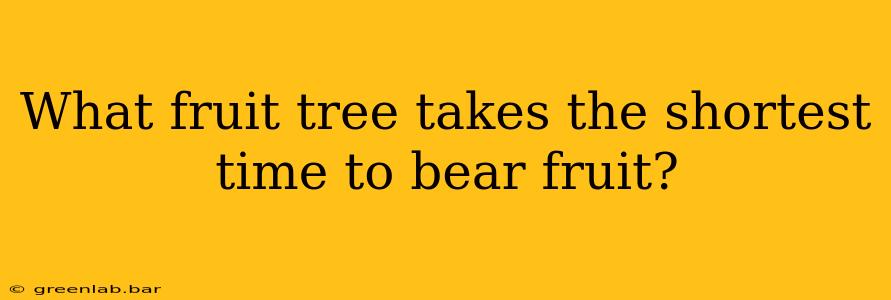Want a quick return on your gardening investment? Planting a fruit tree that bears fruit rapidly can be incredibly rewarding. While the exact timeframe depends on factors like variety, climate, and care, some fruit trees consistently outperform others in speed to harvest. This guide explores the fastest-bearing fruit trees and offers tips for maximizing your yield.
Top contenders for fastest fruit:
Several fruit trees are known for their relatively quick transition from sapling to fruit-producing machine. These include:
1. Dwarf Fruit Trees:
Dwarf varieties of many fruit trees, including apple, pear, plum, and cherry, are engineered to bear fruit much sooner than their standard-sized counterparts. Their smaller root systems and compact growth habits often lead to earlier fruiting, sometimes within one to three years of planting. This makes them ideal for smaller gardens or those seeking immediate gratification.
2. Figs:
Fig trees are famous for their speed. Depending on the cultivar and growing conditions, many fig varieties can produce their first crop within one year of planting, and a substantial harvest within two to three years. Their relatively low maintenance requirements contribute to their popularity among beginning fruit growers.
3. Some Berry Bushes (Technically not Trees):
While not technically trees, berry bushes deserve a mention. Many varieties of raspberry, blackberry, and blueberry bushes produce fruit remarkably quickly—often within the first year after planting. Though not trees, they offer a swift path to homegrown fruit.
4. Peach and Nectarine Trees:
Peach and nectarine trees, particularly dwarf varieties, are also known for their relatively fast fruiting. You can expect your first harvest within two to three years, though some might even surprise you earlier.
Factors Influencing Fruiting Time:
While the trees listed above generally bear fruit faster, several factors can influence the exact timeline:
- Climate: A warm, sunny climate generally promotes faster growth and fruiting.
- Soil quality: Well-drained, nutrient-rich soil is essential for optimal tree health and productivity.
- Rootstock: The rootstock used for grafting significantly impacts the tree's size and fruiting time. Dwarfing rootstocks, as mentioned above, accelerate fruiting.
- Pruning: Proper pruning techniques can encourage earlier and more abundant fruiting.
- Pollination: Adequate pollination is crucial. Consider planting multiple varieties for cross-pollination, if needed.
- Tree health: Diseases and pests can significantly delay or prevent fruiting. Regular monitoring and preventative measures are crucial.
Maximizing Your Harvest:
To get the fastest possible harvest, follow these best practices:
- Choose the right variety: Research varieties known for their rapid fruiting and suitability for your local climate.
- Select high-quality nursery stock: Healthy young trees are more likely to bear fruit sooner.
- Proper planting techniques: Ensure proper planting depth and spacing.
- Consistent watering and fertilization: Provide adequate water and nutrients throughout the growing season.
- Pest and disease management: Monitor for pests and diseases and take appropriate control measures.
By carefully considering these factors and choosing the right tree, you can enjoy fresh, homegrown fruit in a fraction of the time it might take with other fruit trees. Remember, patience is still a virtue, but choosing the right tree can significantly speed up the process.

